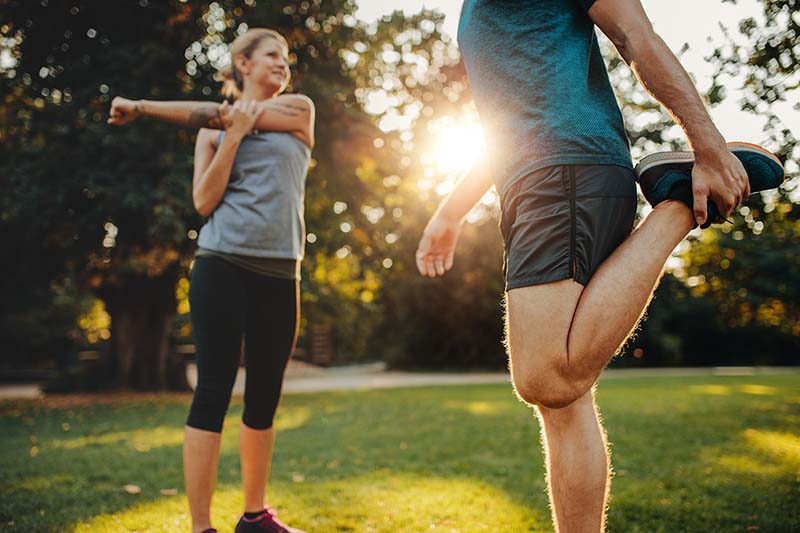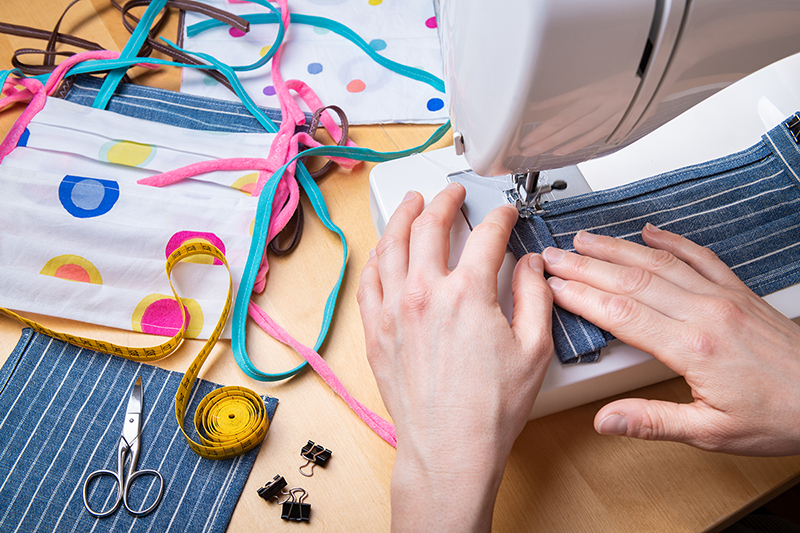Stretching 101: All You Need to Know
Taking the time to engage in a stretching routine can help you live a healthier life.

Hey, you! Stand up, reach your arms in the air, and stretch from head to toe like nobody’s watching!
Didn’t that feel great? Stretching your muscles isn’t just for athletes. Taking a few moments of your day to stretch offers so many benefits to your body, including enhanced flexibility and improved immune system health. There’s much more than meets the eye when it comes to touching your toes.
Here are just a few of the many pros of stretching:
Improves flexibility and mobility.
Flexibility and mobility are important to all of us. Keeping your muscles flexible can help you live better, whether you’re serious about working out, or you just want to maintain your daily movement routine. And like so many things, this gets more important as you age.
Fixes posture problems.
Everyone could use some practice in standing up straight. Research shows that over 31 million Americans suffer from poor posture, which can lead to muscle and joint pain.
Related: Taking Care of Your Back at Work
Prevents pain.
If you are a sufferer of chronic joint or muscle pain, are experiencing menstrual cramps, have back problems, or have frequent headaches or migraines, taking time to stretch might be the secret to feeling like yourself again. Regular stretching, when combined with exercise, has been linked to reducing a variety of different chronic pain conditions.
Improves your mental health.
Stretching reduces both mental stress and physical stress on the body, which does wonders for your overall mental health. In fact, studies show that stretching can increase serotonin levels (otherwise known as the happy hormone) in the brain, which decreases symptoms of depression and anxiety.
Things to avoid:
Stretching looks simple, and it is most of the time! But be careful about making these common mistakes:
- Overextending your muscles (stretching should not be painful—if it is you may be pushing yourself too hard.)
- Holding your breath (breathing slowly and consistently makes stretching more effective. If you hold your breath while stretching you may actually limit your flexibility.)
- Stretching injured muscles (let the injured or strained muscles heal completely before stretching and engaging in rigorous physical activities.)
- Not warming up (your muscles need light aerobic activity to warm up before stretching—otherwise you may be at risk for injury if your muscles haven’t loosened up.)
A few stretching exercises to try:
Even if you don’t have time to stretch all your muscles, a few of these quick moves are easy to fit into your schedule:
- Butterfly: Sit on the floor with the soles of your feet pressed together and knees bent to the sides. Hold your ankles or feet and move your body forward as far as you can while pressing your knees to the floor. You can hold this stretch for one to two minutes.
- Sphinx: Lie on your stomach with your legs behind you, place your elbows under your shoulders and arms on the floor as you lift your chest off the floor (like a sphinx!). Lengthen your spine and lift the top half of your body up to feel a nice stretch.
- Hamstrings: Stand with your feet apart and knees slightly bent, exhale as you bend forward at the hips and wrap your arms around your legs. Roll back up when finished!
- Neck: Sit with your back straight and chest lifted. Tilt your head so your left ear reaches for your left shoulder. Gently press down on your head with your left hand to deepen the stretch. Now try it on the other side!
There are hundreds more stretches you can try! Focus on problem areas, and give extra attention to poses which you don’t normally hold in your daily life. You can also try out yoga or Pilates classes that focus on stretching and breathing to help you continue your healthy lifestyle. However you choose to do it, give stretching a go!




